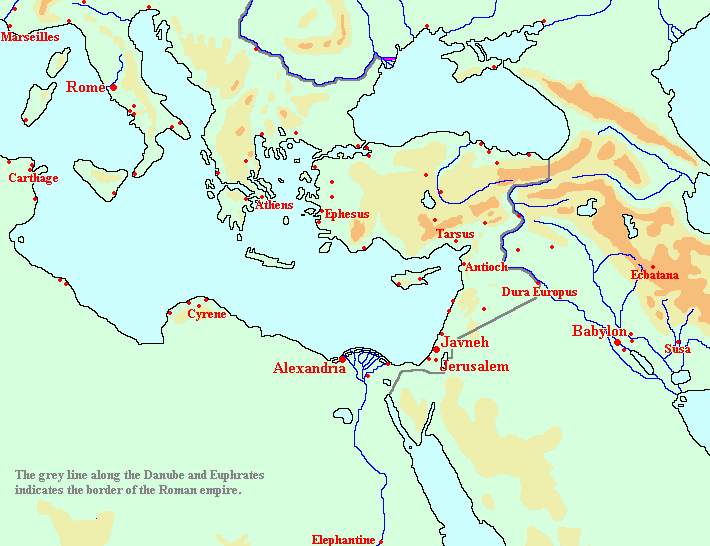Ascending to Jerusalem
Hagigah 2
Our masechet begins with the axiom that everyone is
obligated to come to Jerusalem
for the three major festivals, Pesach, Shavuot and Sukkot. After that follows a
long list of those exempt from this obligation: women, small children, slaves,
deaf people, etc. It seems that except for those explicitly listed as exempt,
everyone else must show up in Jerusalem at the Temple three times a year.
Aliyah laregel was a huge phenomenon in
But one element seems to be missing in the Gemara’s analysis
of הכל חייבין -
the distance that someone had to travel to reach Jerusalem . Diaspora Jewry in the late Second Temple
period encompassed communities in Egypt ,
Syria , Asia Minor (Turkey of today), Rome ,
and of course Babylonia . The travel to and
from and Jerusalem
was very time consuming. Even someone coming from the Galilee
would have to travel at least 3 days in each direction. From Babylonia
it would take a minimum of two weeks. Did Jews really make that journey three
times a year?
Map of Diaspora communities
http://www.livius.org/
It seems clear that the answer is no, at least from a
practical perspective.But we can also bring proofs for this answer from the
sources. Professor Zeev Safrai in his Mishnat Eretz Yisrael for Hagigah
addresses this issue.
http://simania.co.il/bookdetails.php?item_id=966449
First he reminds us that the halacha clearly states that if
one is בדרך רחוקה , far from Jerusalem , he does not have to bring the Pesach sacrifice. The mishnah defines this distance as past
Modiin, only a half day’s journey away. If one does not have to come for קרבן פסח from a distance, then
it seems clear that he also does not have the mitzva of ראייה
.
He continues by drawing a distinction between ראיית פנים , showing up in Jerusalem , and קרבן
ראייה , the sacrifice you bring when you come. The Yerushalmi clearly emphasizes
that distinction and we are all familiar with this source:
אלו דברים שאין להם שעור: הפאה והביכורים והראיה (משנה פאה)
The Yerushalmi explains that while there is no amount
specified in ראיית פנים , there is in קרבן ראייה ,
as Bet Hillel and Bet Shammai discuss in the second mishnah here in Hagigah. You
can come to Jerusalem
as often as you want but you are not obligated to come all the time.
Professor Safrai adds that by doing a quick calculation of
available space for sacrifices, there is no way that there could have been more
than 100,000 sacrifices on the altar at one time. He gets a similar number for
those participating in the Pesach sacrifice. One hundred thousands Jews is very
impressive but it was only a small percentage of the Jewish world in the first
century. Those who came performed a mitzva but those who could not come were
not censured.
And yet, we still want to think that everyone participated
in some way in aliyah laregel. Fortunately, there was an institution that
allowed all men to participate, wherever they may have been in the Jewish
world. Everyone was obligated to contribute the מחצית
השקל, the half shekel tax, and thus be part, even in a small way, of
the great mitzva of ראייה. For more on that, see this post http://israeldaf.blogspot.co.il/2013_10_01_archive.html
A half shekel coin
http://en.wikipedia.org/wiki/Shekel
May we merit to see all of Am Yisrael in Jerusalem for the upcoming regel of Sukkot!






Comments
Post a Comment